Tend the Edges
June 19, 2021
I’m one of those that hadn’t visited the hair salon at all during the pandemic until just this month. So much hair growth mirroring the fullness of the garden in June: shaggy, heavy, veiling, rank growth. It was TOO MUCH! A radical 10” lop, enough to donate for cancer survivors, feels summer- ready and free.
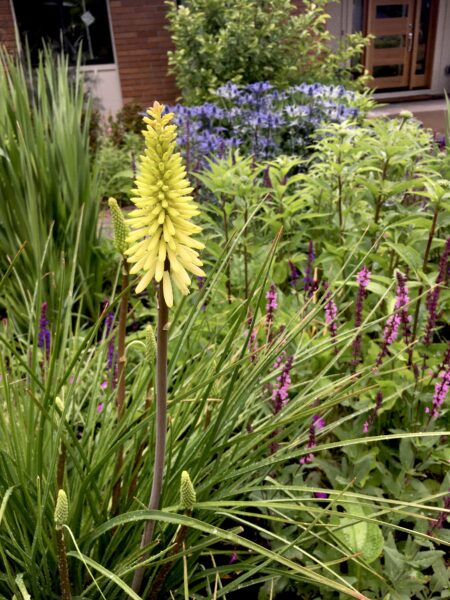
full and lush for summer solstice
Independently, Jason then Richard, both long time clients, commented on the “fullness” of their gardens. Both do have generous self seeders – echinacea in profusion, pink-y purples and white; Carex divulsa (European meadow sedge, mistakenly identified as Carex tumulicola) filling every bare niche. So there is that. Editing self seeders will have to be the subject of a later story. For summer solstice this year, I want to talk about tending the edges, or as horticultural ecologists promote it: messy interior / clean frame.
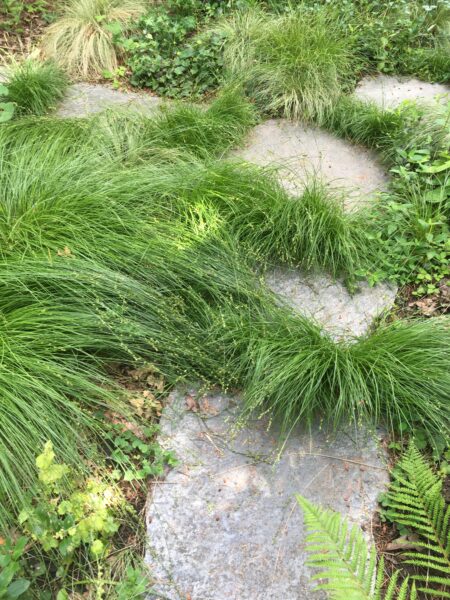
This pathway sedge needs a summer haircut
Do you need to address the lush growth in your garden with the same heavy hand as my hair stylist did with my new bob? Sometimes, yes. If a plant isn’t well-sited to allow for it’s mature size, then okay, cut it back, but, when the time is right, transplant it to a better spot. A place that suits the plant’s nature will make you both happier.
More often, all your habitat garden needs in June is to:
Tend the Edges
Both your feet and your eye need a clear path to follow. Sedges and wood spurge creeping into and over paths, poppies flopping post bloom, fern fronds overarching, obscuring the way through. This is the heart of that “overgrown” or “too full” fear. Or the well deserved concern that others won’t “get it”, won’t see the garden for the wildness. To have a naturalistic habitat garden that welcomes all species, including the human animal, tend the edges. Trim back, mow down, shear and shape the lushness back off the pathways, away form the edges, shaping a welcoming way, a clear path. Between step stones, trim flush whatever has crept in, let the volunteers fill the gaps as long as they’re tolerant of grazing. Be the grazing deer widening a swath through the glen. Use a string trimmer if the task is of a scale that calls for it, hand tools will do for you putterers.
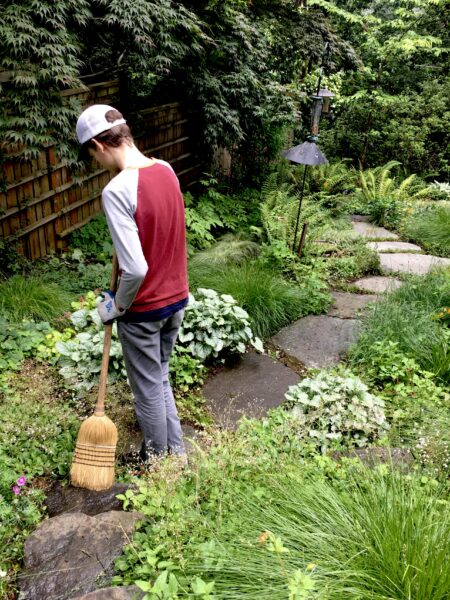
trim and sweep
Black metal edging is an excellent guide for maintaining the intended sweep of your wood chip path, curve of your fleur de lawn, or straight line of your d.g. patio. If all you do for maintenance is to reveal the definition of the metal-edged line, your garden will become inviting again.
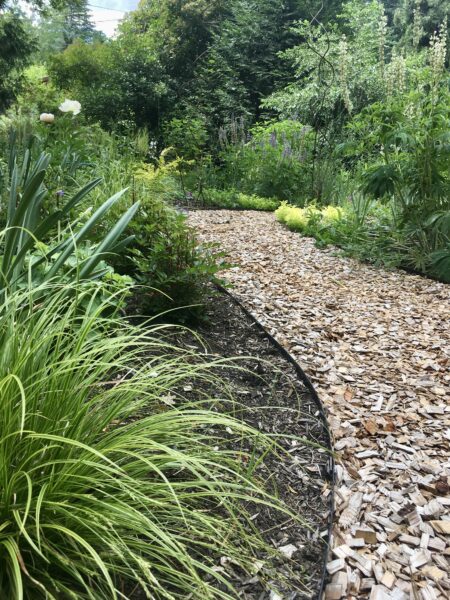
black metal edging keeps it tidy
It will be inviting down low where feet stroll, that is. But look up and around as you tend the edges, too. Early flowering shrubs like Daphne odora and Ceanothus ‘Julia Phelps’, Oregon grape and sweet box, show their health with full green growth, often pushing against your thighs, wetting jeans and catching on the burdens you carry past – purse straps, ladders, leashes. Especially where it grows near a path, give your shrubs a tidy shape. Post bloom is the time to do it. Snip snip, shape it back at least in line with the path’s edge. It doesn’t take long and makes a world of difference. Trim, don’t tie in. The latter looks congested and weird. Sculpt those corridor shrubs to fit a body moving past.
An Oregon ash grows alongside our front sidewalk – lower limbs sweeping down, out, and up at the tips, a girl’s twirly skirt, lacy green atop angular grey mesh of twig and branch. June’s long days and generous rains weigh the skirt down, limbs meeting foreheads, grabbing hats, poking eyes. No arborist required for this kind of tree pruning. A happily puttering gardener is equipped for the task with the usual edge tending tools – gloves and pruners will take care of it. Simply walk the path, grasp whatever hits your face, stand on tip toes to be your taller friend, pull it towards you a bit if it’s flexible and cut at a discreet place up the limb where side branches emerge. Don’t leave a pointy nub!
My son and I have been taking weekly romps out into little known parks in our area. At age 14, it thrills me that he delights in taking the path less traveled, the hint of a way off to the side, the scramble up creek bed, over downed tree, through towering cow parsnip and encroaching brambles. Adventures into nature where you have to watch for trail side stinging nettles and know that your nicest pants aren’t going to come home clean are rich and rewarding and increasingly important. But at home, in your own outdoor living room, a clear path, a well-defined edge and freedom to move about evoke a sense of humanity in our own habitat, our home, our place in nature.
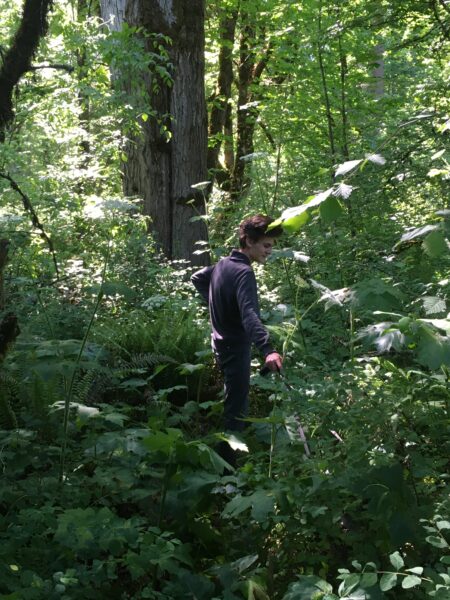
plants can touch you all they want on nature excursions

What a great topic! Cool concept: “messy interior/ clean frame.” Thanks for this
Thanks, Alyse! The messy interior lets us work less, right? And makes for some happy insects! But we need the frame to feel at home in the garden. What are edges like?
The deer grazer image is so helpful, Leslie! It reminds me that I too am part of the lushness of my Garden, and it is OK to make space for my movement through it. It is even ok to make mistakes in the process
Yes, Lainey, you are so much a part of the lushness!
It’s a great way to have a good feeling in the garden without working all day. But it is not always easy when a beautiful selfseeder turns up on the wrong side of the edge as they always do in my garden.
The are allways exceptions in my book, poppies, verbena, wild violets and digitalis, californian poppies. Those are alowed even on the path. So it will never be really tidy in my garden.
A blurred edge, then! That’s a romantic take on it. I LOVE the wild violets, too, wherever they roam. Do you ever transplant out of your paths and into the beds? I recently moved a yarrow volunteer into the eryngium and alliums – just what the bed needed!